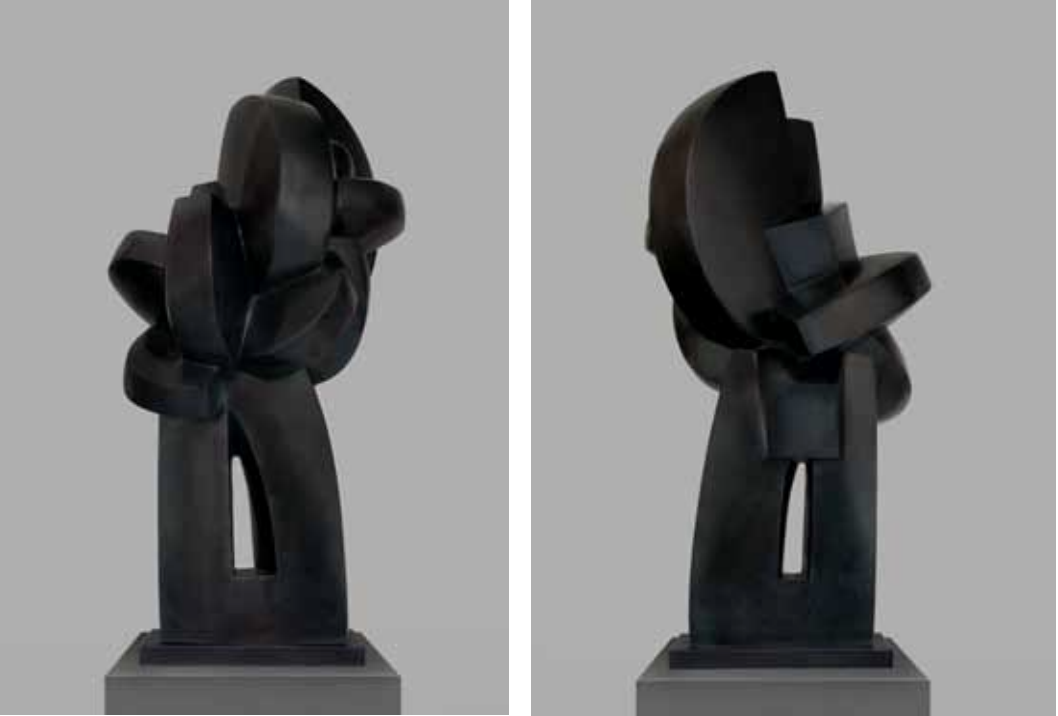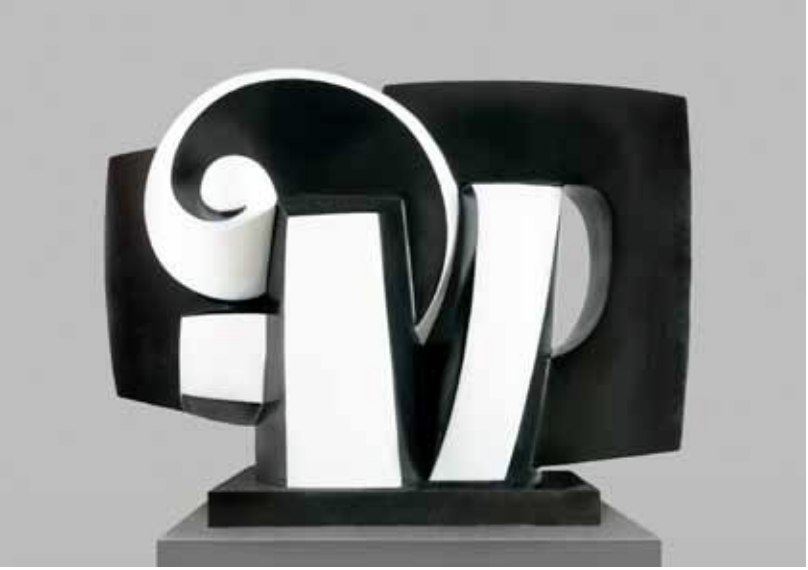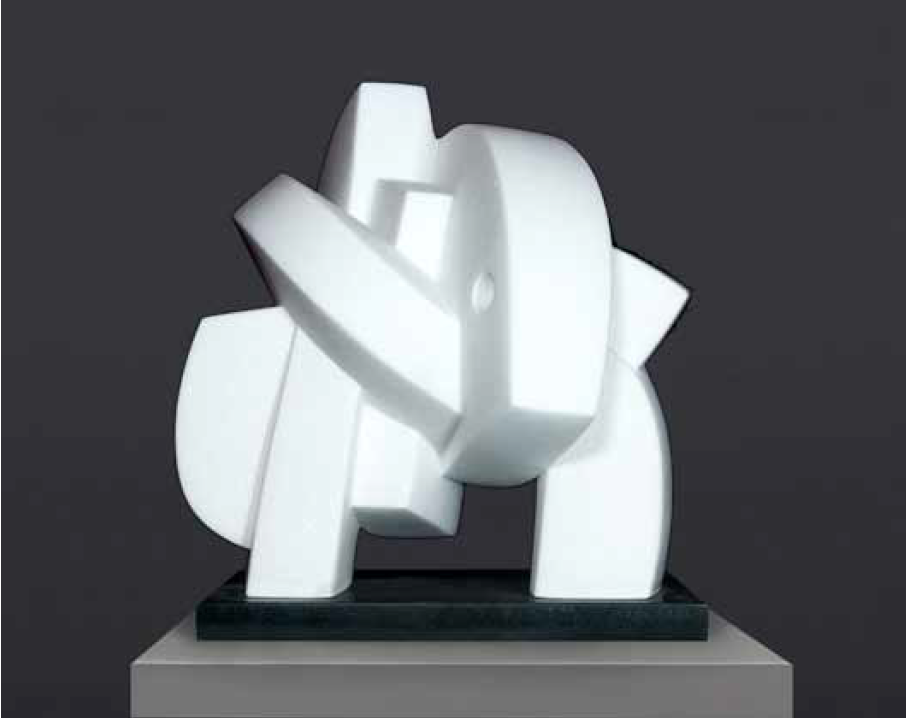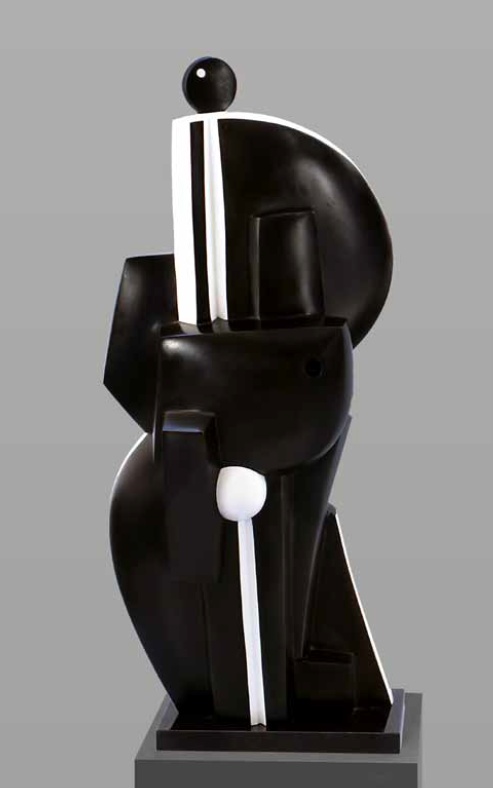INK AND INNUENDOSOPHIA VARI AND LI YONG FEI
Born on the historic Greek Peninsula of Attica jutting into the Aegean Sea, Sophia Vari’s extraordinary and peripatetic life story reads like an art history of the twentieth century. Hailing from a Classical Greek tradition she firmly believes is ‘in the blood’, Vari has spent a lifetime traveling and absorbing the many cultures that have fed her artistic imagination. From Mayan to Egyptian, Olmec to Cycladic, and periods spanning the Ancient to Baroque and movements Cubism to Surrealism, Sophia Vari has known the great artistic figureheads of her time, including Henry Moore, and Maria Callas, who sat for Vari in the creation of a bust one week before the singer’s untimely death. For nearly the past four decades Sophia Vari has been married to Columbian artist Fernando Botero and their life of adventure and artistic critique has clearly been one of beauty and mutual benefit to their distinctive practices. Once claiming “painting is an illusion”, Vari skips between oils, watercolours, mixed media and collage with ease, as well as jewellery in silver, gold, wood, ivory and coral, or ‘portable sculptures’, as she prefers to call them. Yet it is with large and monumental sculpture that Vari is clearly in her element, stating in 1976: “I want to touch, I want the volume, I want to be able to walk around my work, I want to create into a space… to feel my own existence.” Vari’s sculptures have evolved through several stages over the course of decades dedicated to perfection and she is seemingly just as active today as she was fifty years ago, working every day for up to eight hours. Indeed Sophia Vari is a study in contrasts. Slight and statuesque, Vari’s feminine frame is at variance to her chosen materials of bronze, marble and silver; the weight and physicality of her work constantly exploring a delicacy of balance. She is fascinated by the tension between gravity and levity and her work remarkably exudes both in equal measure.
Beginning to sculpt in the 1960s, the young Vari was preoccupied by the human form and Classical techniques. Moving into rounded abstraction by the 1980s, in more recent years her work has evolved into constructed and planar forms, often painted in polychrome to contribute a sense of movement to the work, with occasional Mondrian reds, blues and yellows adding a certain playfulness. While today Vari pays homage to her Greek heritage through the marble and bronze media of her work, she has freed herself from the human form over the years to explore a more complex presentation of the interaction of form. And her play with contradictions never really ceases for the viewer. The contrast between seeing reproduced images and being exposed to Vari’s work in person is stark: when experienced, there is a surprising subtlety and moreover, sensuality that is unexpected for such heavy material and formations. Vari has said to have been entranced by the sensuous women in Rubens’ paintings from a young age and there is an undeniable sexuality to her own work which is sophisticated. Just as with Rubens, in Sophia’s sculpture the robust and light coincide as forms engage with space and at times appear almost suspended. Italian schools have also clearly been a great influence, and the simplicity and vitality of Giotto and Piero della Francesca may be the defining objectives for Vari. The Italian art critic Vittorio Sgarbi once said Vari “humanises geometry”, but she rather sees geometry as a tool of discipline which she uses to make the work “clean and clear” and “permits indulgence with other things”, such as the beauty of the materiality and the patina.
In our interview by phone from a little Greek island to Beijing I am struck by Sophia’s energy, her ease at witching languages, and the memory of a mind that too is clean and clear. She speaks of conquering adversity early on in the aftermath of World War II, learning salient lessons of overcoming cultural isolation, and a cool-headed pragmatism she inherited from her grandmother. Besides the formative relationships of her life which all centre upon art and creation, Sophia speaks frankly that art is not catharsis for her as the artist, but her great aspiration is rather to ‘do something good’ with her art for others. She speaks unpretentiously of the peace that ink art offers the viewer, confiding that while she has a feeling for it she could not do it, and generously praises the works of ink artist Li Yongfei. Unlike Li Yongfei, who believes the otherwise ethereal practice of meditation has a practical and direct influence on his artistic practice, Sophia ingeniously admits to a corporeal, almost workmanlike approach to her art. She does not claim to enter a creative Gestalt, a ‘creative whole’ between her life and work, her greater concern being “bringing clarity and ethics to creation”. The septuagenarian continues:- “if I can give a little bit of harmony and peace to the viewers of my work then I am satisfied. Peace provides clarity for thought, which in turn provides the way to a practical solution”. In achieving a masterclass in aesthetic balance the ends may be the same for the two artists, but their approaches could not be more dramatically different, both philosophically and practically. While Sophia is concerned with morality, Li Yongfei is preoccupied with a Confucian ideal of harmony above morality. I imagine Sophia in her studio determining proportions in clay and toiling with casts for bronze in foundries, while half a world away a young ink artist sits as if in complete stillness.
– Emily de Wolfe Pettit



